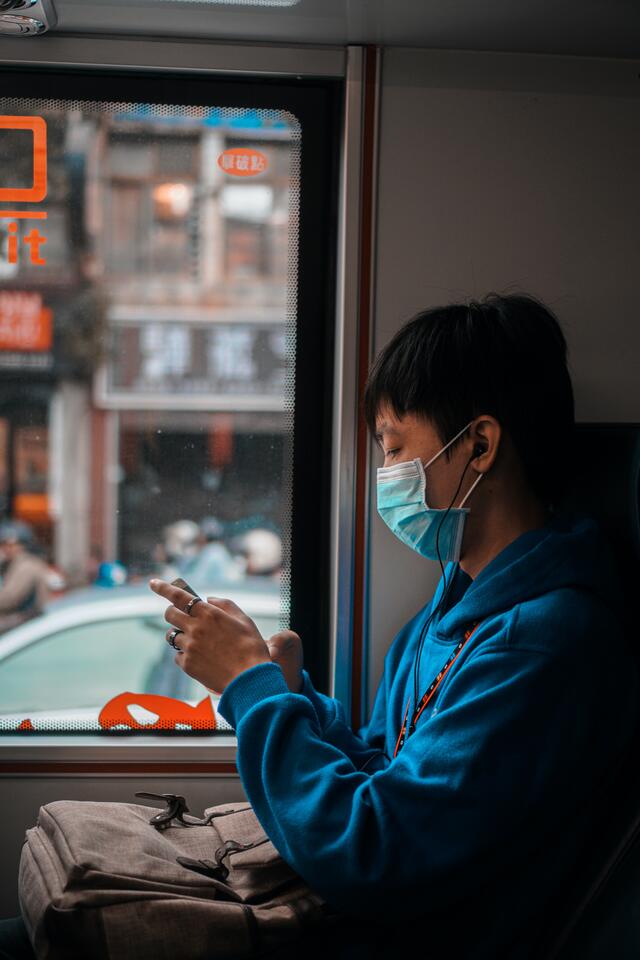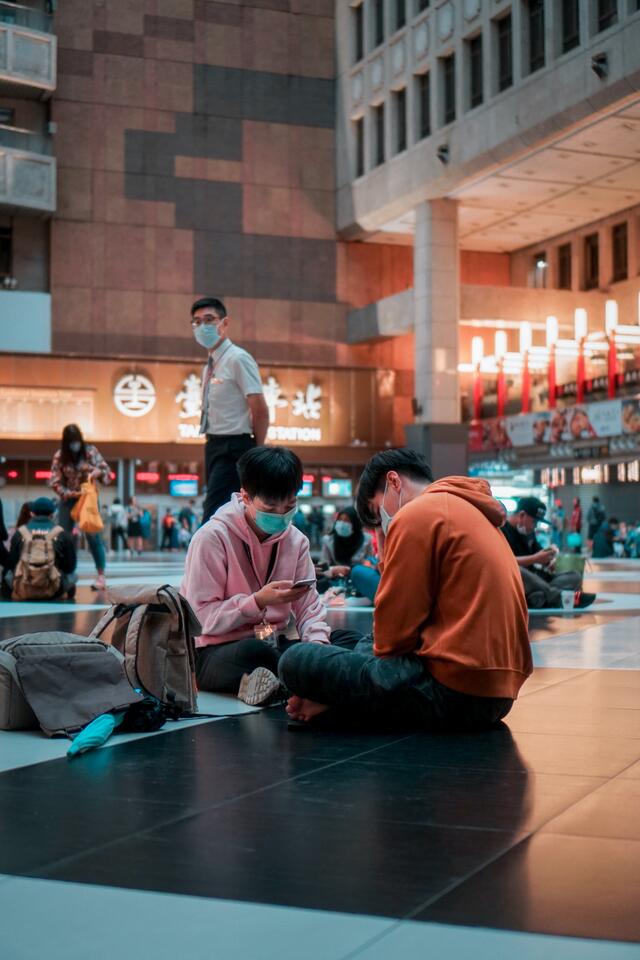
SIPA Capstone Examines Governments’ COVID-19 Communication Strategies
The following article is by Anya Schiffrin, director of SIPA’s specialization in Technology, Media, and Communications, with assistance from Nicole Pope. Students who contributed to the research cited are Hansol Chung MIA ’21, Dahlia Ezekwonna MIA ’21, Eleonora Smeriglio MIA ’22, Seyoon Jung MIA ’21, Seongmin Lee MPA ’21, James Leando MIA ’21, and Lucia Zerner MIA ’21.
In April 2020, a group of SIPA students in my course on global media compared the coverage of COVID-19 in seven countries. More than half a year later, a new group of SIPA students is looking back at the spring of 2020 for a Capstone workshop on “Analyzing Risk Communication and Behavioral Change During the COVID-19 Pandemic.” They’re taking advantage of hindsight to compare how a different set of countries handled COVID-19 messaging, and what aspects of their strategies most effectively communicated accurate information to their citizens.
The Capstone client, the U.S. State Department, is eager to know what have been the “loudest voices” throughout the pandemic and how the public has responded to government messaging.
Crisis communications experts know that the most effective messaging is timely, transparent, and complete. But during the early months of the pandemic the science was not settled, and mis- and disinformation about COVID began to circulate rapidly, prompting the World Health Organization to refer to the problem as an “infodemic.”

Worse, in some countries the leading sources of disinformation were heads of state who downplayed the severity of the pandemic. This was true in the United States but also in Brazil, India, Tanzania, and other countries. In France, for instance, President Emmanuel Macron stressed the need to live normal life in the pandemic’s early stages, before the French government was forced to admit on March 18 that the country was facing a serious health crisis.
At the same time, governments in other countries, especially those close to China, were quick to act. One of the Capstone team members, who originally comes from North Korea, observed that the governing regime took extreme precautions to prevent what it called a “vicious virus”—not least because of its poor health and medical infrastructure. Indeed, North Korea closed its borders in January, essentially shutting off all trade with neighboring China and completely blocking foreigners from entering the country.
Similarly, Vietnam was already warning its public about the danger of the illness in early January. Its viral handwashing video and Taiwan’s “humor over rumor” campaign have received global attention and boosted citizen confidence in these governments. Uruguay never imposed a lockdown, but warned the public and promoted social distancing through the launch of a COVID-19 awareness campaign before the first case was even recorded in the country, winning strong public support.
In New Zealand, the recent landslide re-election of Prime Minister Jacinda Ardern was attributed in part to the desire of voters, in uncertain times, for the security of competent leadership. Sarah Helm, strategic communications manager in Ardern’s office, told our students during a Zoom visit about New Zealand’s communications strategy, which included blanketing the country with clear, reassuring slogans: “Stay Home. Stay Safe” was an early slogan, while “Be Kind” became the government’s motto later on.
Through their Capstone research, the students found that Taiwan, South Korea, Vietnam, and Uruguay had highly effective public messaging, while France’s early downplaying of the pandemic opened the door to confusion. International organizations like the WHO and UNICEF and civil society organizations assisted in many countries including Nepal and Uruguay. Uruguay was relatively well prepared to communicate about COVID-19 because of earlier dengue and measles outbreaks in 2019. Similarly, South Korea had revamped its risk communication capacity following the 2015 MERS outbreak, improving transparency which promoted greater trust in government actions.
Students also found that most countries deployed an array of communication tools in their outreach, including social media posts and text messages in addition to traditional broadcast media. In Nepal, the government cooperated with NGOs to produce radio broadcasts in several local languages, while South Korea and Vietnam also used posters to deliver information.
From the onset of the pandemic, the Vietnamese government communicated frequently with its citizens—sometimes hourly—using social media, mobile apps, and texting. Popular celebrities were brought in to encourage public buy-in with wartime rhetoric and appeals to the patriotic spirit. Uruguay’s ministry of public health provided detailed daily updates on its national coronavirus plan via its webpage and televised press conferences.
In Italy, the first European country to introduce a nationwide lockdown in March 2020, Prime Minister Giuseppe Conte established a dialogue with citizens during “fireside chats,” stressing the need for shared responsibility. His first press conference on March 11 was broadcast live on social-media channels to maximize outreach. Taiwan, Vietnam, and South Korea made ample use of popular mobile apps and text messaging while France, Italy, and Nepal favored Facebook, Twitter, and WhatsApp.

Several countries developed highly effective and innovative methods to warn and inform the public. In Vietnam, the government released a popular song with new COVID-related lyrics and launched a dance challenge on TikTok. The animated video attracted millions of views globally. Taiwan cooperated with civil-society organizations to produce a digital map of pharmacies where masks were available while the country’s Digital Ministry employed comedians to produce funny memes in its “humor over rumor” campaign, designed to go viral faster than the misinformation they were countering. In France and Nepal, concerned citizens could obtain information about the pandemic through hotlines. Italy promoted the website of its health ministry as the definitive source of information about the pandemic.
In contrast to the Asian countries where government messaging was comprehensive, and early, engendering both trust and compliance among its citizens, other countries took a less centralized approach. In Italy, the prime minister’s and health minister’s popularity rose during the pandemic but in the early, chaotic days, the government’s message was at times undermined by conflicting messages from some provincial governors. In Nepal, while health authorities promoted safety measures, the prime minister weakened their message by stating that Nepalis have a “stronger immune system,” further strengthened by “exposure to fresh air and consumption of garlic, ginger, and turmeric.” France was forced to adopt a more proactive approach to communication in March, partly to counter misinformation spread by a controversial doctor who promoted untested treatment methods. President Macron’s admission that his government had poorly handled the early stages of the pandemic helped restore public confidence and boosted his leadership rating. The South Korea government, for its part, took corrective action against misinformation, removing social posts on domestic social platforms and blocking local access to the offending posts on Facebook and Twitter (albeit raising some concerns about freedom of speech).
Our students found common patterns in the COVID-19 communication strategies of the seven countries studied, such as collaboration between the government and other actors and the combination of traditional media and innovative forms of outreach. While all countries focused on the importance of hygiene measures and social distancing to avoid spreading the virus, the use of masks was initially discouraged in France, partly due to shortages, while it was actively promoted in Taiwan from the onset of the pandemic. In Italy, the government only recommended mask wearing in late April.
The success of countries like Taiwan, South Korea, Vietnam, and Uruguay, which promoted consistent and clear messages through a combination of traditional media and innovative channels, highlights the importance of well-coordinated public information campaigns to build trust and ensure public compliance in the fight against the pandemic.